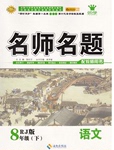题目内容
-----People should stop using their private cars and begin using public transport.
----- ________________. The roads are too crowded as they are.
A. Go head. B.Pardon C. All right D. Exactly
 优学名师名题系列答案
优学名师名题系列答案书面表达
根据题目所提出的具体要求,写出一篇连贯完整的短文。
假如你是李华,你的美国笔友Mike, 即将随其父母来中国,并在中国度过春节,他来信向你询问有关春节的习俗。请你根据下表提供的信息给他写封回信,告诉他有关春节的习俗以及你们家通常是怎么过春节的。词数不少于60字。信的开头已给出。
要点如下:
The Spring Festival | |
Time | on the first day of the lunar year |
Reason | drive a demon(怪兽), named Nian away |
Activities | put on couplets(对联) receive lucky money set off firecrackers |
Dear Mike,
I’m glad to know that you are coming to China with your parents and spend the Spring Festival here._________________________________________________________________________________
______________________________________________________________________________________
______________________________________________________________________________________
Yours,
Li Hua.


 ),并在其下面写出该加的词。
),并在其下面写出该加的词。